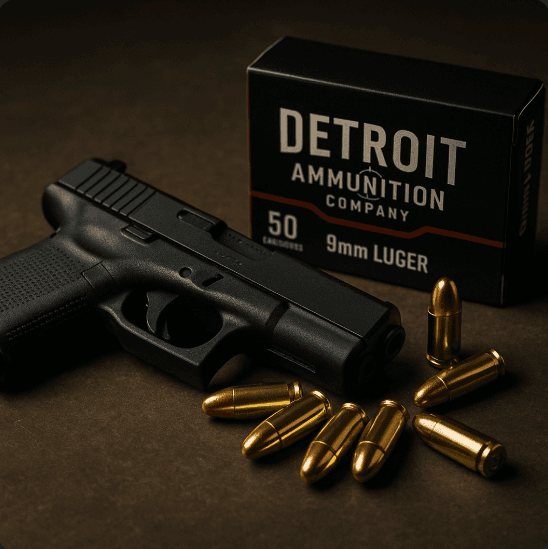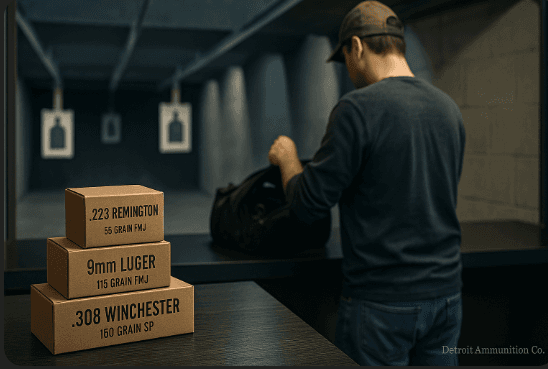Best Gun Cleaning Advice for Professionals and Beginners
Posted Feb 6, 2022
Whether you are a military professional, hunter, law-enforcement professional, or hobbyist, using a firearm is a one-of-a-kind experience. If you are either of these gunmen, one of the things you dread doing is cleaning your firearm. You may find the task time and energy consuming. However, a clean firearm is safer than an unclean one, and it is enjoyable to fire. Whether you are at the range, chasing a gazelle, or on in combat, the gun must fire when you want it to.
A myriad of gun problems arises when it hasn’t been cleaned properly. With a clean gun, the likelihood of spotting any potential dangerous issues in the firearm is higher, which ensures your safety and that of others around you. Cleaning and maintaining your weapon can help prevent the most unfortunate events.
As far as cleaning a firearm is concerned, there are several techniques you can use. However, we believe in a more holistic approach to gun cleaning. We have put together six simple but effective gun cleaning tips to make your job easier.
Let’s break them down.
Get the Right Supplies
Most people are likely to skimp on this one, but you don’t have to be one of those people. Before you start cleaning your firearm, you need to have the right supplies at your disposal. While this may seem a little overwhelming at first, there are different kinds of gun cleaning products available in the market. However, not all of them serve the purpose for which they are intended. Break Free, Hoppes, and Birchwood Casey manufactures some of the best gun cleaning products. Not only do these brands clean your firearm, but they also provide sufficient lubrication, as well as the preservation you are looking for.
These cleaning products come in the form of kits, which often include a cleaning chemical and a barrel cleaning rod. The cleaning rod is of utmost importance, whether a long-barrel firearm or a 9mm pistol. It would be best if you covered the tip of the cleaning rod with a piece of fabric to remove the dirt and debris trapped inside the barrel. Some people also go for BoreSnakes. The only problem is that BoreSnakes are good for pistols, but the cleaning rod with tip fabric works best as far as rifles are concerned.
Sometimes, a dark carbon residue accumulates within the barrel, which can hinder your shooting. A brass wire brush comes in handy when you’re trying to get rid of grime. The last thing you’ll need is the cleaning rags. You will need one big rag and several small ones to throw away after you’re done cleaning.
When cleaning a firearm, safety should be your top priority. Before you begin cleaning, you should remove the ammo. Afterward, check the barrel to ensure it doesn’t have any rounds. Once you are certain the gun is empty, the cleaning should begin. Furthermore, before you dismantle your firearm, make sure to spread a cleaning cloth on the floor. It will keep the springs and screws from sliding away, also preventing oil and dark residues from dirtying the floor.
Dismantle the Gun
Now that you have all the cleaning supplies and the cleaning mat spread on the floor, dismantle the gun on the cleaning mat. Here is a complete breakdown of how you can dismantle your firearm, depending on your model.
- If you have a revolver, open the cylinder.
- If you have a semi-auto pistol, you must remove the magazines first. However, the magazine removal part should happen during the safety procedure. Next up, remove the slide and extract the recoil springs, guide rod, and barrel.
- For a Bolt Action Rifle, remove the magazine, followed by bolt extraction.
- In the case of a Semi-Auto AR Rifle, the magazine should be removed first, followed by the rear pins and the upper and lower receivers. Next up, remove the charging handle, followed by the bolt, carrier, and the buffer group.
- For a Semi-Auto AK rifle, remove the magazine followed by the dust cover. Very carefully remove the recoil spring group. The last two things to go are the bolt and the carrier group.
Start Cleaning
With the firearm dismantled comes the part where you can start cleaning. To begin, make sure to spray your weapon with cleaner fluid. Allow it to sit there for ten minutes until the debris softens. Start cleaning the chamber, trigger group, and dust cover with a rag. It is better to start with the chamber, as it makes it easier to get rid of the barrel debris towards the end of the cleaning process. Now, dip your cleaning rags in the cleaning chemical and cleanse every part of the firearm. Continue until the rags start to appear cleaner.
You can use bamboo sticks or ear swabs to clean nooks and corners of the firearms. As you clean these smaller areas, make sure to wipe with tissue paper or a rag to keep the gunk away from the body. Inside the firing pin, the gun powder is likely to get trapped. A bamboo skewer comes in handy when you’re cleaning the area inside the firing pin. As discussed earlier, keep cleaning the external surface of the firearm until there is no residue on the cleaning rags.
If you have a revolver, it will need lesser cleaning due to its design. After you’ve opened the cylinder, you need to wipe down the gun’s interiors until no grime is left on the rag. You can use a plastic scraper or a bamboo skewer to clean the gun powder from under the firing pin. As far as the cylinder is concerned, a barrel cleaning rod and some soaked rags will come in handy. Repeat the process until the rags come back clean.
The semi-auto pistol has a rather complex build. It has a total of five components, including the magazine, frame, barrel, slide, and recoil spring group. You have to begin with the slide and the frame. It would help if you cleaned the barrel and handle later. Each part should be cleaned until there is no residue left on it. You will follow the same process in the case of bolt action rifles.
Now, let’s talk about semi-auto AR and AK rifles. Cleaning their bolts and carriers in the same fashion as those on a bolt action rifle is more effective. The residues around and under the firing pin should be cleaned using a bamboo skewer. The bolts in these rifles can be field stripped, but you don’t need to do that after every time you fire your gun. However, a semi-auto bold must be cleaned after being in the range 5 to 6 times in a row. Another important factor is number of rounds that have been fired using the gun. Usually, the bolts are cleaned when the gun begins to function differently than how it would do in normal circumstances.
Let’s Move to the Barrel
The barrel and the crown are two of the most important components of a firearm. Sometimes, the crown doesn’t function properly due to dirt accumulation. If that happens, the gases aren’t released properly, leading to inaccuracies. When cleaning the firearm, make sure to take extra care when you make it to the crown. Make sure you don’t collide other components with it. Similarly, try to prevent getting the crown scratched. It is better to store the gun when it’s not in use as a safety precaution.
As far as the barrel is concerned, it would help to soak it in the cleaning spray. Now, attach a brass tip to a barrel cleaning rod, which allows the rag to make its way into the barrel. Now, add the rag to the brass tip and gently insert the rod into the barrel. With the rod inside the barrel, push it softly to the crown-muzzle end. Stop when you notice the rag appearing on the other end. Remove the tip with the dirty rag before pulling back the rod very gently. Continue to repeat this process until the rags come out cleaner than before. Sometimes, you need a brass bore brush to get rid of the gunk built inside the barrel. Remember, the brass bore brush shouldn’t be overused. Its purpose is to loosen the debris, so you can clean it out using a rag.
Next up, clean the guide rod and mainspring assembly using a rag. It would be best to remember that it travels from the chamber to the muzzle when a round is fired. Therefore, it is important never to remove a dirty rag in a backward direction. Doing so will damage the crown and rifling.
Clean the Magazine
With other parts out of the way, clean the magazine and exterior of the firearm. The modern gun magazines are made out of polymer, and they are easy to clean. All you need to do is spray them with gun cleaner and clean them using a rag. It would be best to clean every corner until all residues is gone. Next up, you should clean the feeding lips and push down the rag towards the follower. Make sure to go as deep as possible into the magazine. If there is no more dirt or grime on the rag, the magazine is clean, and you can move forward with the cleaning process.
Take Care of Heavy Wearing
Some parts of your gun receive more metal on metal wearing. The more you fire your gun, the more marks will appear. However, there is nothing to worry about. All you have to do is apply gun cleaner or lube on high-wear areas. A general rule of gun cleaning is to leave a small quantity of lubricant on different gun parts and allow it to sit. This includes metal parts, as well as those made out of polymer. Keeping your gun lubed will make it easier for you to clean it after you visit the firing range. If you plan to store your gun and not use it for a long time, make sure you apply some gun grease or lubricant to all the metal parts. However, you should remove the access grease before you fire the weapon. You should remove grease and lube from the gun before firing because the powder burn pressure will be unequal, leading to a catastrophe.
The Final Word
By following the gun cleaning tips mentioned above, you can extend your firearm’s lifespan. It will serve you when you need it the most. Cleaning your firearm can be an challenging process at first, but it is equally rewarding once you get the hang of it. The deeper you delve into the inner workings of your firearm, the more you will learn about it, which will make shooting and maintenance easier. Proper cleaning will maintain your gun in a way that will allow you to pass it to the coming generations confidently. If you are looking for the finest arms and ammunition, feel free to visit our website today. Our well-researched blog posts impart gun knowledge to experts and beginners alike.


